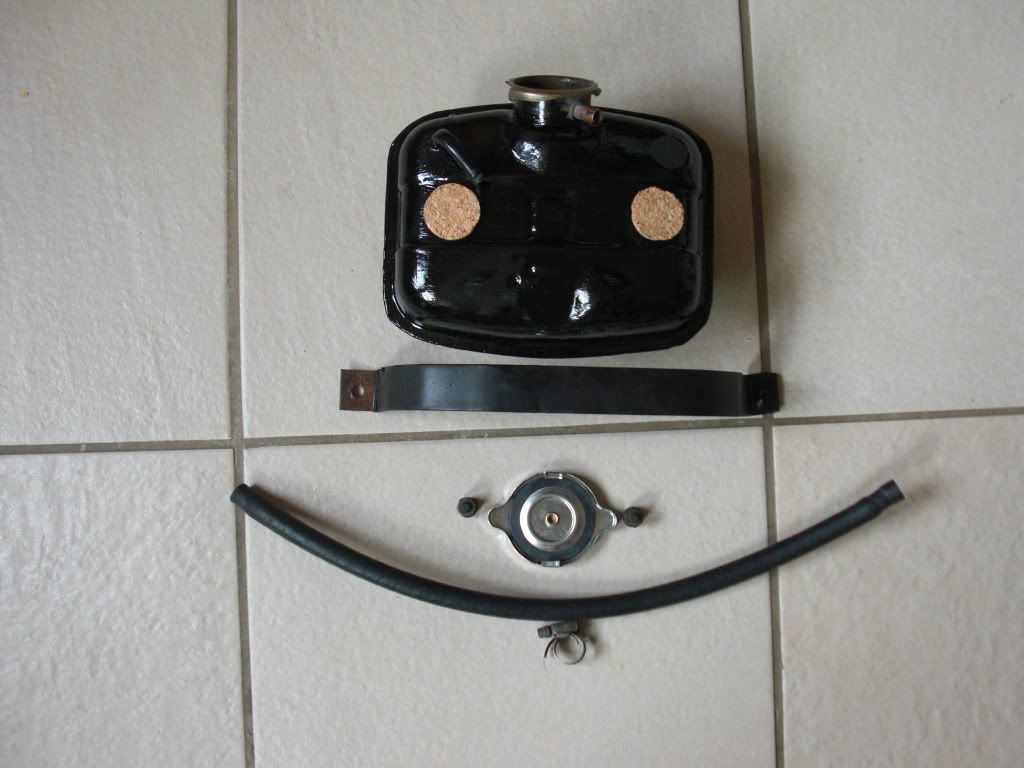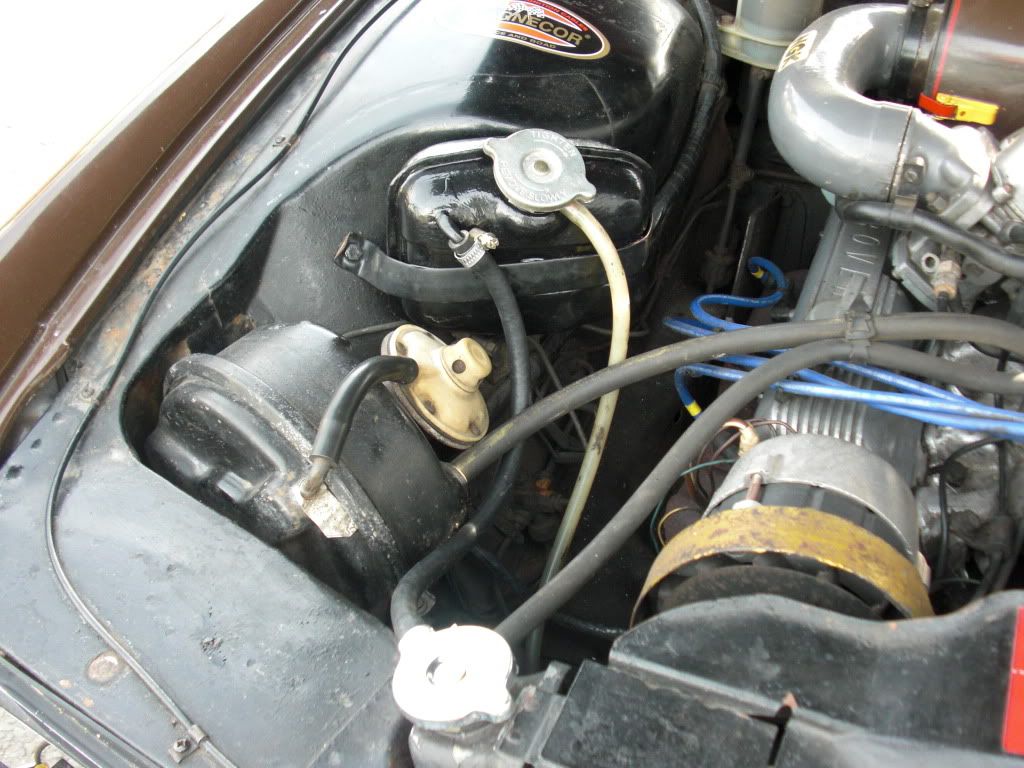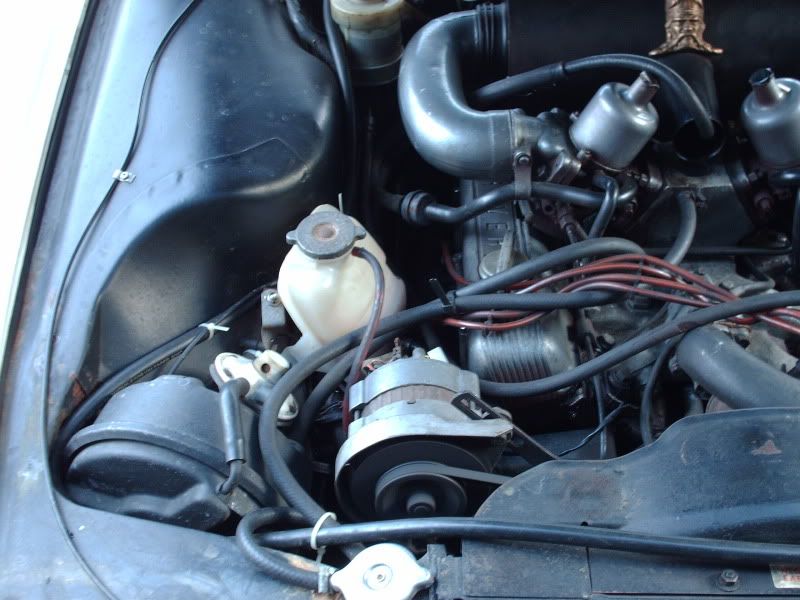Dave3066
Well-Known Member
My project for this weekend has been to finally fit the expansion tank I bought a while ago. I've been slowly collecting all the bits I need and painting the tank ready to fit and the onset of some warmer weather 8) has prompted me to get it done.
Here are the bits:

The tank is an old brass Land Rover Tank which I toyed with the idea of cleaning and polishing but settled for a couple of coats of hammerite. The 2 disks on the tank are cork spacers to prevent metal on metal contact when it's fitted. The strap is an old fuel tank retaining strap cut to size. The rest is self-explanatory.
Here is the space it will occupy:

I offered the tank up to the space and positioned the strap to figure out where to drill the fixing holes. Then it was simply a matter of drilling and fixing the tank with a couple of bolts. I'd got a length of coolant hose with the tank so I attached that to the radiator overflow and put the old overflow hose on the expansion tank overflow. I filled the radiator to the top and burped it a few times by squeezing the top hose and kept topping up until the coolant was right up to the brim. Then I put the blanking cap on the radiator and started the car. I kept feeling the link hose to the expansion tank so I knew when coolant was flowing into the tank (the hose got warm) and watched as coolant rose in the tank. Once I'd got coolant into the tank I filled it halfway with fresh coolant and put the pressure cap on. I ran the car for a while to check the operation of the tank and then switched the engine off and let it cool sufficient to take the pressure cap off safely. I topped up the coolant further, replaced the pressure cap and left it until this morning. When I checked the coolant level in the tank it was about halfway so I knew it was working result. Here is the final installation and it didn't take long at all.
result. Here is the final installation and it didn't take long at all.

Here are the bits:

The tank is an old brass Land Rover Tank which I toyed with the idea of cleaning and polishing but settled for a couple of coats of hammerite. The 2 disks on the tank are cork spacers to prevent metal on metal contact when it's fitted. The strap is an old fuel tank retaining strap cut to size. The rest is self-explanatory.
Here is the space it will occupy:

I offered the tank up to the space and positioned the strap to figure out where to drill the fixing holes. Then it was simply a matter of drilling and fixing the tank with a couple of bolts. I'd got a length of coolant hose with the tank so I attached that to the radiator overflow and put the old overflow hose on the expansion tank overflow. I filled the radiator to the top and burped it a few times by squeezing the top hose and kept topping up until the coolant was right up to the brim. Then I put the blanking cap on the radiator and started the car. I kept feeling the link hose to the expansion tank so I knew when coolant was flowing into the tank (the hose got warm) and watched as coolant rose in the tank. Once I'd got coolant into the tank I filled it halfway with fresh coolant and put the pressure cap on. I ran the car for a while to check the operation of the tank and then switched the engine off and let it cool sufficient to take the pressure cap off safely. I topped up the coolant further, replaced the pressure cap and left it until this morning. When I checked the coolant level in the tank it was about halfway so I knew it was working



